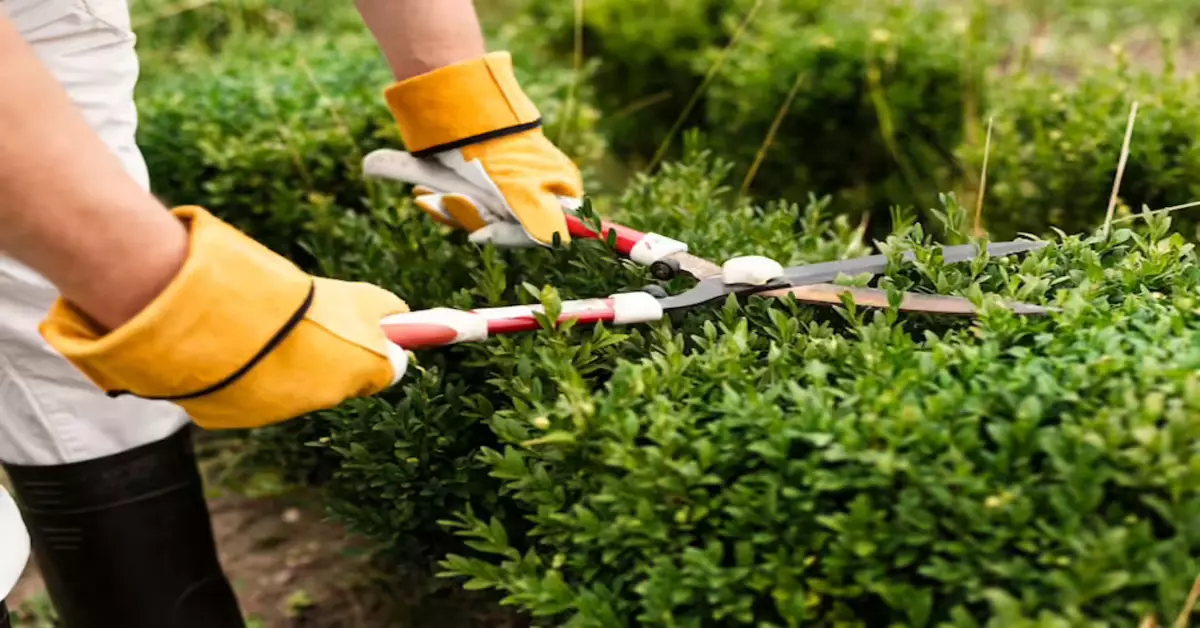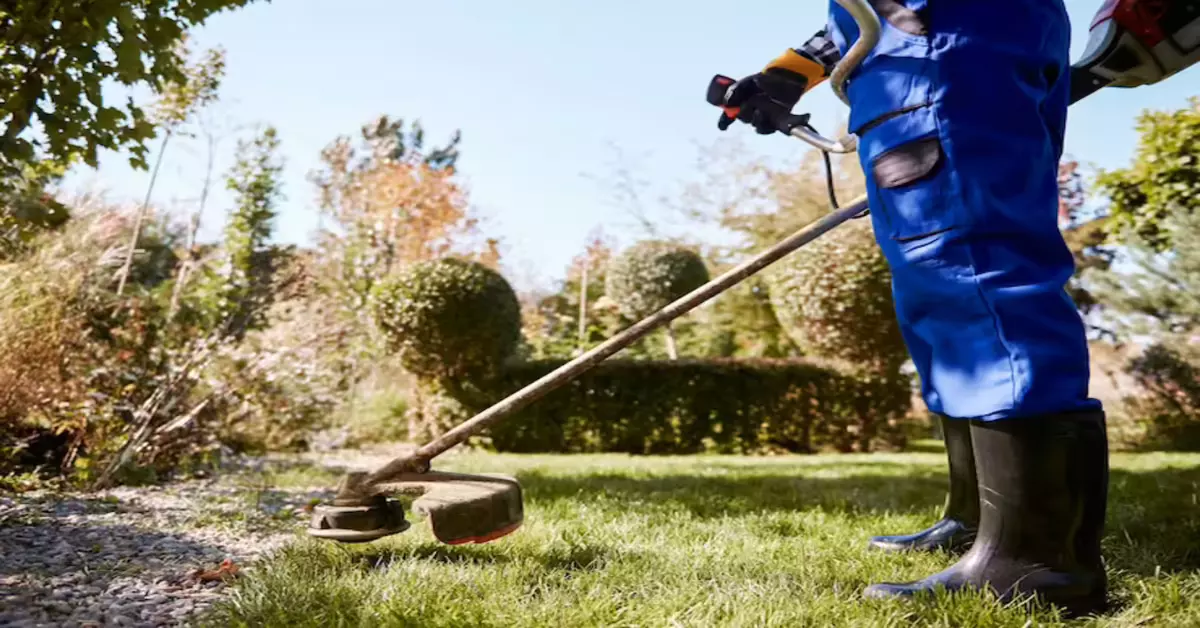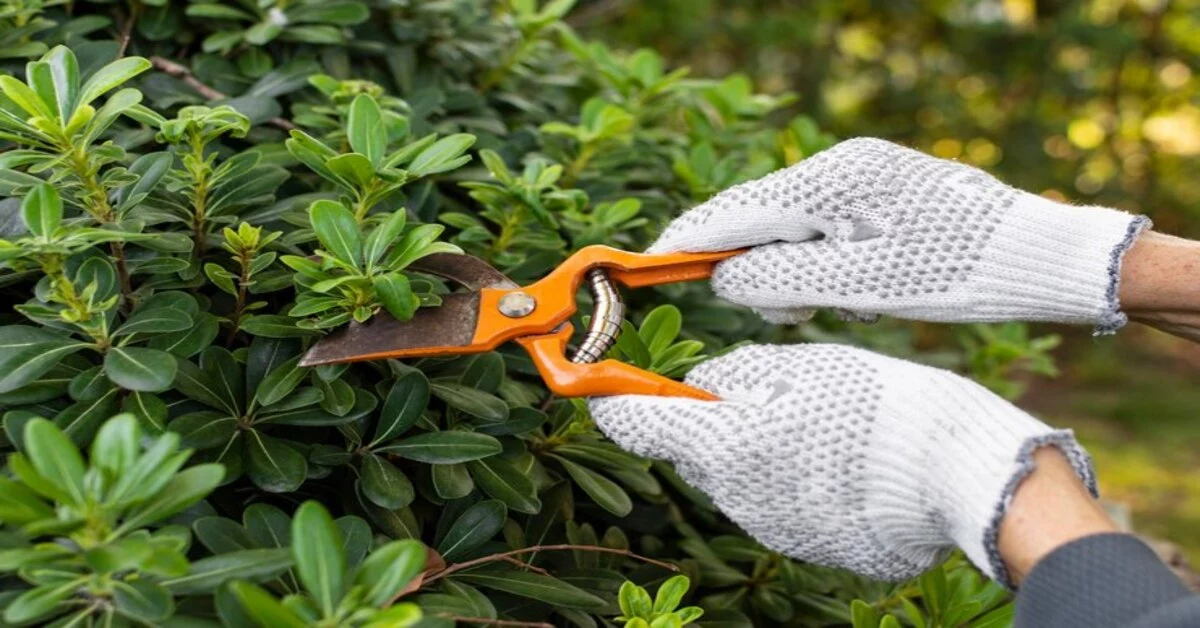In today’s fast-paced world, the allure of low-maintenance gardens has surged. Busy individuals seek respite in verdant spaces without the demanding upkeep traditional gardens entail. This blog aims to guide and inspire those eager to cultivate serene, hassle-free sanctuaries amidst their hectic lives.
Why Low-Maintenance Gardens Matter
Life’s pace accelerates, leaving many yearning for nature’s solace without the time-consuming demands of conventional gardening. This blog serves as a beacon, illuminating pathways toward creating and sustaining these oases effortlessly.
 Understanding Low-Maintenance Gardens
Understanding Low-Maintenance Gardens
In the pursuit of serene outdoor spaces amidst life’s chaos, understanding the essence of low-maintenance gardens becomes pivotal. Let’s delve deeper into what defines these spaces, and their inherent advantages, and dispel common myths surrounding their creation.
Defining Low-Maintenance Gardens
Low-maintenance gardens are carefully curated spaces designed to thrive with minimal intervention. They prioritize plants, layouts, and maintenance practices that reduce time and effort while nurturing vibrant, sustainable greenery. These gardens are a fusion of strategic planning and nature’s resilience, offering tranquility without exhaustive upkeep.
Benefits of Opting for Low-Maintenance Designs
- Time Efficiency: These gardens demand less time, ideal for busy individuals craving green spaces without constant attention.
- Cost-Effective: Reduced maintenance translates to lower expenses on tools, fertilizers, and water.
- Sustainability: With native species and water-efficient techniques, they’re environmentally friendly.
- Year-Round Appeal: Well-designed low-maintenance gardens retain their allure throughout the seasons.
- Stress Reduction: Offering a peaceful retreat, they contribute to mental well-being.
Dispelling Misconceptions about Low-Maintenance Gardens
- Lack of Aesthetic Appeal: Contrary to belief, these gardens can be visually stunning with proper planning and plant selection.
- Limited Plant Choices: There’s a vast array of plants suitable for low-maintenance gardens, offering diversity and color.
- Neglect Equals Thriving: While they require less maintenance, initial planning, and occasional care are vital for sustained vitality.
Understanding the essence and debunking misconceptions surrounding low-maintenance gardens lays the groundwork for crafting effortlessly beautiful green spaces.
Choosing the Right Plants for Effortless Beauty
Transform your Dubai home with our expert renovation services. Explore the art of low-maintenance gardens—carefully selecting plants for lushness and diversity. Achieve a harmonious living space where every element is thoughtfully curated for lasting beauty and sustainability.
Selection Criteria for Low-Maintenance Plants
- Drought Resistance: Opt for plants resilient to varying water conditions, reducing the need for frequent watering.
- Native Species: Indigenous plants are acclimated to local climates, needing less intervention for growth.
- Adaptability: Choose plants adaptable to soil types and light conditions prevalent in your area.
- Perennial Nature: Perennials return yearly, reducing the need for replanting and offering enduring beauty.
- Pest and Disease Resistance: Select varieties less susceptible to pests and diseases, minimizing maintenance efforts.
Types of Plants Ideal for Low-Maintenance Gardens
- Drought-Resistant Varieties: Succulents, lavender, and yarrow thrive with minimal water, perfect for arid conditions.
- Native Species: Indigenous plants like coneflowers, black-eyed Susans, and native grasses blend seamlessly, requiring less care.
- Perennials: Daylilies, hostas, and peonies offer seasonal blooms without frequent replanting.
- Evergreens: These year-round greenery providers, such as boxwoods or junipers, maintain visual appeal regardless of the season.
Tips for Diversity and Color with Low Maintenance
- Strategic Plant Placement: Group plants with similar needs for efficient care and aesthetic impact.
- Layered Planting: Create depth and visual interest by planting taller varieties behind shorter ones.
- Blooming Succession: Choose plants with varying bloom times for continuous color throughout the seasons.
- Foliage Variation: Incorporate plants with diverse leaf shapes and colors to add visual intrigue.
Carefully curating plant selections based on these criteria and incorporating these tips ensures a thriving, visually appealing low-maintenance garden, effortlessly blending color, texture, and vitality.
Crafting Effortless Beauty: Designing Low-Maintenance Gardens
Efficient garden design forms the backbone of low-maintenance landscapes, balancing aesthetics with practicality. Let’s explore design principles, clever use of materials, and hardscaping techniques that minimize upkeep while elevating visual appeal.
Layout and Design Principles
- Simplicity Reigns: Opt for clean lines and uncomplicated layouts, reducing intricate maintenance needs.
- Grouping by Needs: Cluster plants with similar care requirements for streamlined maintenance.
- Strategic Pathways: Well-placed pathways offer access for care without trampling delicate areas.
- Right-Sized Garden Beds: Scale garden beds to manageable sizes, simplifying care and avoiding overwhelming tasks.
Use of Mulch, Ground Covers, and Weed Barriers
- Mulching Benefits: Mulch suppresses weeds, retains moisture, and regulates soil temperature, reducing watering and weeding needs.
- Ground Covers: Low-growing plants cover soil, inhibiting weed growth and minimizing maintenance.
- Weed Barriers: Geotextile fabrics or landscaping fabrics beneath mulch inhibit weed growth while allowing water penetration.
Incorporating Hardscaping for Aesthetic Appeal
- Functional Pathways: Utilize gravel, stepping stones, or pavers for paths that complement the garden’s design and reduce soil compaction.
- Defined Edging: Edge garden beds with stones or pavers to delineate spaces and prevent grass encroachment.
- Containers and Raised Beds: Opt for container gardening or raised beds, minimizing weed infiltration and offering better soil control.
Integrating these design principles, coupled with the strategic use of materials and hardscaping, yields not just visually appealing but practically low-maintenance gardens, harmonizing form and function effortlessly.
Practical Maintenance Strategies: Nurturing Your Low-Maintenance Haven
Maintaining a low-maintenance garden doesn’t mean neglect; it involves strategic care methods that maximize efficiency. Let’s explore water-saving techniques, soil management, and simple yet impactful maintenance tasks for nurturing your green oasis.
Watering Techniques and Efficient Irrigation Systems
- Water-Wise Practices: Water deeply but infrequently to encourage deep root growth and reduce evaporation.
- Drip Irrigation: Install drip systems to deliver water directly to plant roots, minimizing waste.
- Mulching for Moisture Retention: Mulch conserves moisture, reducing the frequency of watering.
Proper Soil Management and Fertilization Methods
- Soil Testing: Regularly test the soil to understand its composition and nutrient levels, enabling targeted fertilization.
- Composting: Incorporate compost to improve soil structure, moisture retention, and nutrient content naturally.
- Slow-Release Fertilizers: Opt for slow-release fertilizers that provide nutrients gradually, reducing the frequency of application.
Pruning, Deadheading, and Simple Maintenance Tasks
- Regular Pruning: Trim dead or overgrown branches to maintain plant health and shape, preventing potential issues.
- Deadheading Flowers: Remove spent blooms to encourage continuous flowering and maintain plant vigor.
- Weed Management: Regularly inspect and remove weeds by hand or using weed barriers to prevent their proliferation.
Implementing these maintenance strategies ensures optimal health for your low-maintenance garden while minimizing the time and effort required for its upkeep. Striking the right balance between care and ease is key to sustaining its beauty effortlessly.
Efficiency Unveiled: Time-Saving Strategies for Your Garden
Streamlining your gardening routine involves smart tools, innovative practices, and technological aids. Let’s explore the arsenal of time-saving tools, gardening techniques, and tech advancements that simplify maintenance while nurturing your green haven.
Introduction to Gardening Tools for Effortless Maintenance
- Pruning Tools: High-quality pruners, shears, and loppers for precise and efficient trimming.
- Watering Systems: Hose timers, drip irrigation kits, and soaker hoses for automated and targeted watering.
- Weeding Tools: Hand weeders, long-handled hoes, and cultivators for quick and effective weed removal.
Time-Saving Gardening Practices
- Companion Planting: Pairing compatible plants to deter pests, enhance growth, and reduce maintenance.
- Container Gardening: Utilizing containers for mobility, weed control, and better soil management.
- Raised Beds: Raised beds offer better drainage, soil control, and reduced weed intrusion.
Embracing Technology for Garden Management
- Garden Planning Apps: Tools like Gardenize, SmartPlant, or Garden Planner assist in layout planning, plant care reminders, and garden tracking.
- Smart Irrigation Systems: Wi-Fi-connected irrigation controllers that adjust watering schedules based on weather forecasts, saving water and time.
- Soil Monitoring Gadgets: Devices like soil moisture sensors or pH meters provide real-time data for precise watering and fertilization.
Incorporating these tools, time-saving practices, and technology not only eases your gardening workload but also enhances efficiency, allowing you to relish your green space with minimal effort. Adaptation to these aids ensures a harmonious blend of modern convenience and natural beauty in your garden.
Seasonal Gardening: A Year-Round Maintenance Guide
Navigating the ever-changing seasons in gardening requires a tailored approach for each phase. Let’s dive into a comprehensive seasonal maintenance calendar, preparing your garden for winter’s slumber and ensuring vibrant vitality through spring and summer.
Breakdown of Maintenance Tasks Across Seasons
Fall:
- Clearing Debris: Remove fallen leaves and spent plants to prevent disease and pests.
- Pruning: Trim back perennials and shrubs for winter readiness.
- Soil Care: Add compost or mulch to protect the soil and provide nutrients for the coming months.
Winter:
- Protecting Plants: Shield vulnerable plants with coverings or mulch to safeguard them from frost.
- Tool Maintenance: Clean and store garden tools properly for their longevity.
- Planning and Research: Use winter downtime for garden planning, researching new plants, and layout adjustments.
Spring:
- Soil Prep and Planting: Amend soil, start seeds indoors, and transplant seedlings.
- Pruning and Trimming: Trim dead branches and prune flowering shrubs after blooming.
- Weed Management: Begin weed control early in the season to prevent proliferation.
Summer:
- Watering and Mulching: Maintain consistent watering and replenish mulch to retain moisture.
- Fertilization: Apply slow-release fertilizers and feed plants to sustain growth.
- Pest and Disease Monitoring: Regularly inspect plants for signs of pests or diseases and take preventive measures.
Tips for Winter Preparation and Minimal Work in Colder Months
- Mulching and Wrapping: Insulate plants with mulch and protective coverings to shield them from harsh winter conditions.
- Tool Maintenance: Clean, sharpen, and oil tools for preservation during the dormant season.
- Garden Cleanup: Tidy up the garden by clearing dead plants and debris, minimizing spring workload.
Spring and Summer Tasks for Vibrant Gardens
- Planting and Pruning: Introduce new plants and maintain regular pruning schedules for optimal growth.
- Watering and Feeding: Ensure consistent watering and provide nutrients for healthy, lush growth.
- Weed and Pest Control: Regularly manage weeds and monitor for pests to maintain plant health.
Aligning your gardening tasks with the rhythm of each season ensures a thriving garden year-round, preparing, nurturing, and celebrating the ever-changing beauty of nature in your space.
Real Stories: Success in Low-Maintenance Gardening
Embarking on a journey toward a low-maintenance garden might seem daunting for busy individuals. However, real-life examples illuminate the path, showcasing how others with hectic schedules have triumphed in nurturing thriving green spaces. Here are inspiring case studies and testimonials that testify to the practicality and beauty of low-maintenance garden designs.
Real-Life Examples of Busy Individuals and Low-Maintenance Gardens
Case Study 1: Anne’s Oasis Amidst a Hectic Life
Anne, a full-time working mom, transformed her backyard into an inviting sanctuary. By strategically choosing drought-resistant plants and installing drip irrigation, she spends minimal time watering. Grouping low-maintenance plants and using mulch to suppress weeds drastically reduced her maintenance efforts.
Case Study 2: Mark’s Urban Haven
Mark, a city professional, utilized raised beds and container gardening to create an urban oasis on his apartment terrace. Opting for native species and utilizing self-watering containers minimized his time commitment, allowing him to unwind amidst greenery after long workdays.
Testimonials Showcasing the Benefits of Low-Maintenance Gardens
“I never thought I could have a garden with my busy schedule. Switching to low-maintenance plants and smart watering systems made it possible!” – Sarah
“The joy of having a beautiful garden without constant upkeep is priceless. It’s my daily escape!” – Jack
“I’m amazed at how little time I spend maintaining my garden now. It’s therapeutic and stress-relieving.” – Emily
These real-life accounts highlight the practicality and joy that low-maintenance gardens bring to individuals leading fast-paced lives. They underscore how thoughtful planning, strategic plant choices, and efficient watering systems can yield stunning results with minimal effort.
By sharing these experiences, we hope to inspire and reassure others that creating and maintaining a green haven is attainable, even amidst a hectic lifestyle.
Troubleshooting in Low-Maintenance Gardens: Tackling Common Issues
Even in low-maintenance gardens, occasional hurdles like pests, diseases, or other challenges may arise. Understanding and addressing these issues promptly can maintain the garden’s health effortlessly. Let’s explore common problems and effective solutions for a thriving green space.
Identifying and Addressing Common Problems
Pests:
Identifying pests like aphids, snails, or caterpillars early on is crucial. Natural remedies like neem oil, insecticidal soaps, or introducing beneficial insects can help manage pest populations without disrupting the garden’s balance.
Diseases:
Common diseases such as powdery mildew or root rot can affect plants. Proper spacing, good airflow, and avoiding overhead watering can prevent many fungal diseases. Treatments like copper fungicides or organic remedies like baking soda solutions can address these issues effectively.
Weed Infestation:
Regular weeding and using mulch or landscape fabrics can prevent weed growth. When weeds emerge, manual removal or spot treatments with herbicides can swiftly manage them.
Quick Fixes and Preventive Measures
Mulching:
Applying mulch suppresses weeds, retains moisture, and moderates soil temperature, offering multiple benefits in one step.
Proper Watering:
Water plants at the base to avoid wetting foliage, reducing the risk of fungal diseases. Installing drip irrigation or soaker hoses ensures targeted watering.
Plant Selection:
Choosing disease-resistant or native species adapted to local conditions reduces the likelihood of pest and disease problems.
Proactive Garden Care Tips
- Regular Inspections: Regularly inspect plants for signs of pests, diseases, or nutrient deficiencies to catch issues early.
- Healthy Soil: Maintain soil health with proper drainage, aeration, and organic matter to promote strong, disease-resistant plants.
- Good Hygiene: Clean garden tools and remove dead plant debris to prevent the spread of diseases.
By swiftly identifying and effectively addressing these common garden issues, a low-maintenance garden can thrive without significant disruptions. Proactive measures and careful attention ensure that these hurdles remain manageable, allowing your garden to flourish effortlessly.
Sustainability and Low-Maintenance Gardens: Cultivating Green Harmony
Low-maintenance gardens not only offer ease but also align with sustainability goals, fostering a harmonious relationship between your garden and the environment. Let’s explore how these gardens contribute to sustainability efforts, their environmental benefits, and ways to promote eco-friendly choices in garden maintenance.
Contributions of Low-Maintenance Gardens to Sustainability
Water Conservation:
By utilizing drought-resistant plants and efficient watering systems, low-maintenance gardens significantly reduce water consumption, aiding in water conservation efforts.
Reduced Chemical Usage:
Limiting the need for pesticides and synthetic fertilizers minimizes chemical runoff, safeguarding local ecosystems and waterways.
Native Plant Advocacy:
Embracing native species supports local biodiversity, preserving indigenous flora and fauna and fostering resilient ecosystems.
Environmental Benefits of Low-Maintenance Gardening Practices
Habitat Creation:
Native plants attract beneficial insects and pollinators, creating vibrant habitats that support local wildlife.
Soil Health Improvement:
Mulching, composting, and minimal soil disturbance enhance soil structure and fertility, promoting healthier ecosystems.
Carbon Footprint Reduction:
Low-maintenance gardens, with reduced water and chemical usage, contribute to lower greenhouse gas emissions, aiding in mitigating climate change.
Promoting Eco-Friendly Choices in Garden Maintenance Products
Organic Alternatives:
Opt for organic fertilizers, compost, and natural pest control methods to minimize chemical impact on the environment.
Sustainable Materials:
Choose sustainably sourced or recycled materials for garden structures, tools, and containers, reducing the carbon footprint.
Water-Efficient Technology:
Invest in water-saving technologies such as rain barrels or drip irrigation to efficiently manage water resources.
Encouraging eco-friendly practices not only preserves the beauty of your garden but also nurtures a healthier environment for future generations. Low-maintenance gardens serve as an exemplar of sustainable living, demonstrating how simple choices can lead to significant positive impacts on the planet.
 Conclusion
Conclusion
In the realm of gardening, low-maintenance gardens weave ease and beauty seamlessly. They offer solace amidst life’s rush without demanding exhaustive care. From strategic plant choices to eco-friendly practices, these havens embody sustainability effortlessly. Embracing them empowers busy individuals to nurture thriving green spaces.
As we cultivate these gardens, we foster a deeper connection with nature and contribute to a sustainable world. Let’s continue this journey, sowing seeds of tranquility and sustainability, and crafting lush sanctuaries that enrich our lives and the planet, one effortless garden at a time.







